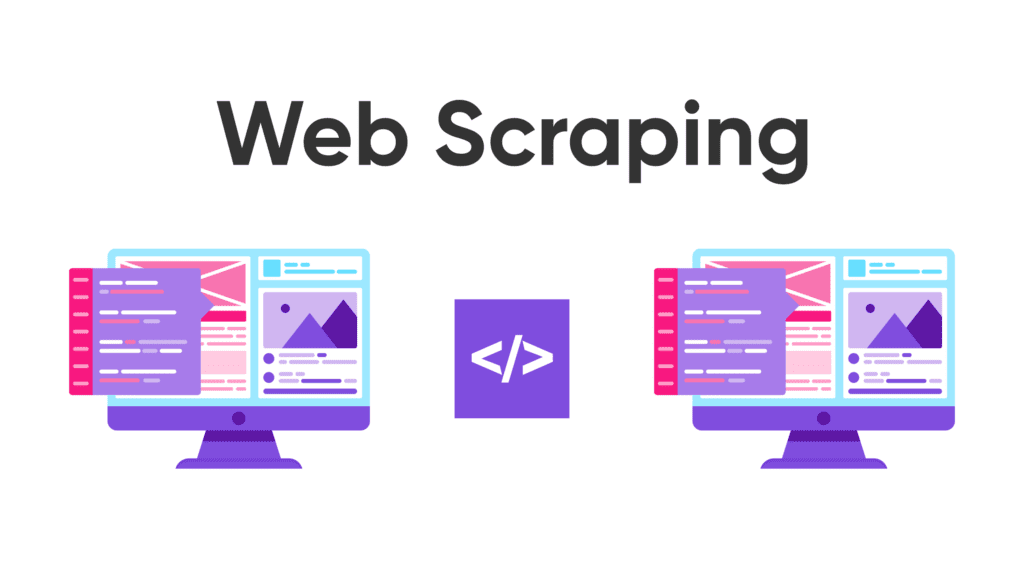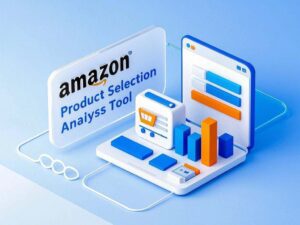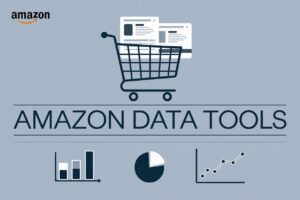I. Introduction
In today’s digital age, web scraping technology has become an essential tool for acquiring and analyzing vast amounts of online data. As web technologies continue to evolve, more and more websites are adopting dynamic content loading methods to enhance user experience and performance. This necessitates the mastery of dynamic website scraping techniques, building upon traditional static web scraping methods. Python, as a powerful and flexible programming language, holds a prominent position in the field of web scraping. This article will delve into how to use Python to scrape dynamic websites, using Amazon as an example to demonstrate practical applications.
II. Fundamentals of Dynamic Website Scraping
A. Static vs. Dynamic Websites
Static websites have fixed content, with servers returning complete HTML documents. Dynamic websites, on the other hand, have content generated by JavaScript, and the initial HTML document may not contain all the content, requiring JavaScript execution on the client-side to retrieve complete data.
B. Challenges in Scraping Dynamic Websites
- JavaScript rendering: Requires simulating a browser environment to execute JavaScript.
- Asynchronous loading: Content may be loaded asynchronously via AJAX, requiring waiting or triggering specific events.
- User interactions: Some content may only be displayed after clicks, scrolls, or other actions.
- Anti-scraping mechanisms: Dynamic websites can more easily implement complex anti-scraping strategies.
C. Common Tools and Libraries for Dynamic Web Scraping
- Selenium: Simulates real browser operations, supporting multiple mainstream browsers.
- Playwright: An emerging automation testing tool supporting various browsers.
- Requests-HTML: Combines the powerful features of Requests and PyQuery.
- Scrapy-Splash: A JavaScript rendering middleware for the Scrapy framework.
III. Practical Python Web Scraping for Dynamic Websites
A. Setting Up the Environment
First, we need to install the necessary libraries:
pythonCopypip install selenium
pip install webdriver_manager
B. Basic Usage of Selenium
Here’s a simple example of using Selenium to open a webpage and get the page title:
pythonCopyfrom selenium import webdriver
from selenium.webdriver.chrome.service import Service
from webdriver_manager.chrome import ChromeDriverManager
# Initialize WebDriver
driver = webdriver.Chrome(service=Service(ChromeDriverManager().install()))
# Open webpage
driver.get("https://www.example.com")
# Get page title
print(driver.title)
# Close browser
driver.quit()
C. Handling JavaScript-Rendered Content
For JavaScript-rendered content, we need to wait for the page to load completely:
pythonCopyfrom selenium.webdriver.common.by import By
from selenium.webdriver.support.ui import WebDriverWait
from selenium.webdriver.support import expected_conditions as EC
# Wait for specific element to appear
element = WebDriverWait(driver, 10).until(
EC.presence_of_element_located((By.ID, "dynamicContent"))
)
# Get dynamically loaded content
print(element.text)
D. Simulating User Interactions
Selenium allows us to simulate various user actions, such as clicking and entering text:
pythonCopyfrom selenium.webdriver.common.keys import Keys
# Find search box and enter content
search_box = driver.find_element(By.NAME, "q")
search_box.send_keys("Python web scraping")
search_box.send_keys(Keys.RETURN)
# Wait for search results to load
WebDriverWait(driver, 10).until(
EC.presence_of_element_located((By.CLASS_NAME, "result"))
)
# Get search results
results = driver.find_elements(By.CLASS_NAME, "result")
for result in results:
print(result.text)
IV. Advanced Techniques and Best Practices
A. Handling AJAX Requests
For AJAX-loaded content, we can use Selenium’s explicit wait functionality:
pythonCopy# Wait for AJAX content to load completely
WebDriverWait(driver, 10).until(
EC.presence_of_element_located((By.ID, "ajaxContent"))
)
B. Bypassing Anti-Scraping Mechanisms
- Use random delays
- Rotate User-Agents
- Use proxy IPs
- Simulate real user behavior
C. Performance Optimization Strategies
- Use headless browser mode
- Disable images and JavaScript (when possible)
- Implement concurrent scraping
- Utilize caching mechanisms
V. Case Study: Scraping Amazon Product Data
A. Requirement Analysis
Suppose we need to scrape product information for a specific category on Amazon, including product name, price, rating, and number of reviews.
B. Code Implementation
pythonCopyfrom selenium import webdriver
from selenium.webdriver.chrome.service import Service
from webdriver_manager.chrome import ChromeDriverManager
from selenium.webdriver.common.by import By
from selenium.webdriver.support.ui import WebDriverWait
from selenium.webdriver.support import expected_conditions as EC
import time
import random
def scrape_amazon_products(url):
driver = webdriver.Chrome(service=Service(ChromeDriverManager().install()))
driver.get(url)
# Wait for product list to load
WebDriverWait(driver, 10).until(
EC.presence_of_element_located((By.CSS_SELECTOR, "div[data-component-type='s-search-result']"))
)
products = []
product_elements = driver.find_elements(By.CSS_SELECTOR, "div[data-component-type='s-search-result']")
for element in product_elements:
try:
name = element.find_element(By.CSS_SELECTOR, "h2 a span").text
price = element.find_element(By.CSS_SELECTOR, "span.a-price-whole").text
rating = element.find_element(By.CSS_SELECTOR, "span.a-icon-alt").get_attribute("textContent")
reviews = element.find_element(By.CSS_SELECTOR, "span.a-size-base").text
products.append({
"name": name,
"price": price,
"rating": rating,
"reviews": reviews
})
except:
continue
# Random delay to simulate human behavior
time.sleep(random.uniform(0.5, 2))
driver.quit()
return products
# Usage example
url = "https://www.amazon.com/s?k=laptop&crid=2KQWOQ2Y7LBQM&sprefix=laptop%2Caps%2C283&ref=nb_sb_noss_1"
results = scrape_amazon_products(url)
for product in results:
print(product)
C. Data Parsing and Storage
In practical applications, we may need to store the scraped data in a database or export it to a CSV file for further analysis.
VI. Enterprise-Level Scraping Solutions
A. Challenges of Building In-House Scraping Systems
While we can build powerful dynamic website scrapers using Python, building and maintaining a scraping system at the enterprise level may face numerous challenges:
- High server costs
- Complex anti-scraping countermeasures
- Need for continuous updates and maintenance
- Legal risk management
B. Introduction to Pangolin Scrape API
For teams or companies without dedicated scraping maintenance capabilities, using Pangolin Scrape API might be a better choice. Pangolin Scrape API is a professional web data collection service specifically designed for scraping data from e-commerce platforms like Amazon.
C. Advantages and Use Cases of Scrape API
- High stability: Maintained by a professional team, addressing website changes and anti-scraping measures
- Compliance: Adheres to website robots.txt rules, reducing legal risks
- Cost-effective: Pay-as-you-go, no need for large investments in building and maintaining scraping systems
- Easy integration: RESTful API design, supporting multiple programming languages
- Data quality assurance: Provides cleaned and structured data
VII. Conclusion and Future Outlook
Python web scraping technology for dynamic websites provides us with powerful data collection capabilities, from simple Selenium scripts to complex enterprise-level solutions, offering various options to meet different needs. As network technologies continue to evolve, scraping techniques are also constantly evolving. In the future, we may see more AI-based intelligent scraping systems that can automatically adapt to changes in webpage structures and more intelligently bypass anti-scraping mechanisms.
Whether choosing to build an in-house scraping system or use third-party services like Pangolin Scrape API, the key is to make wise choices based on your own needs and capabilities. For most businesses, focusing on core business and leveraging mature API services may be the wiser choice, while for teams with special requirements or technical strength, building customized scraping systems can provide greater flexibility and control.
In conclusion, mastering Python web scraping techniques for dynamic websites not only helps us more effectively acquire and analyze web data but also provides powerful support for data-driven decision-making, giving us an advantage in today’s digital age.






